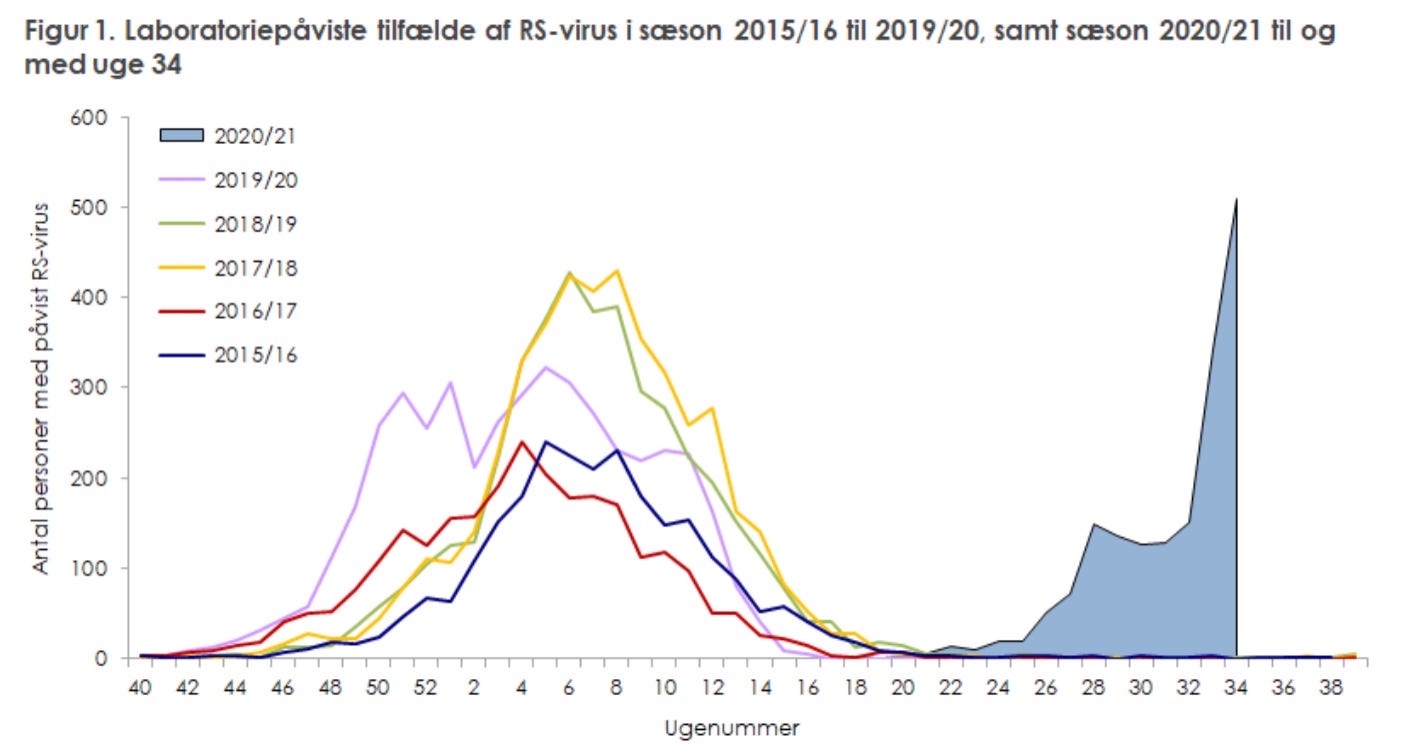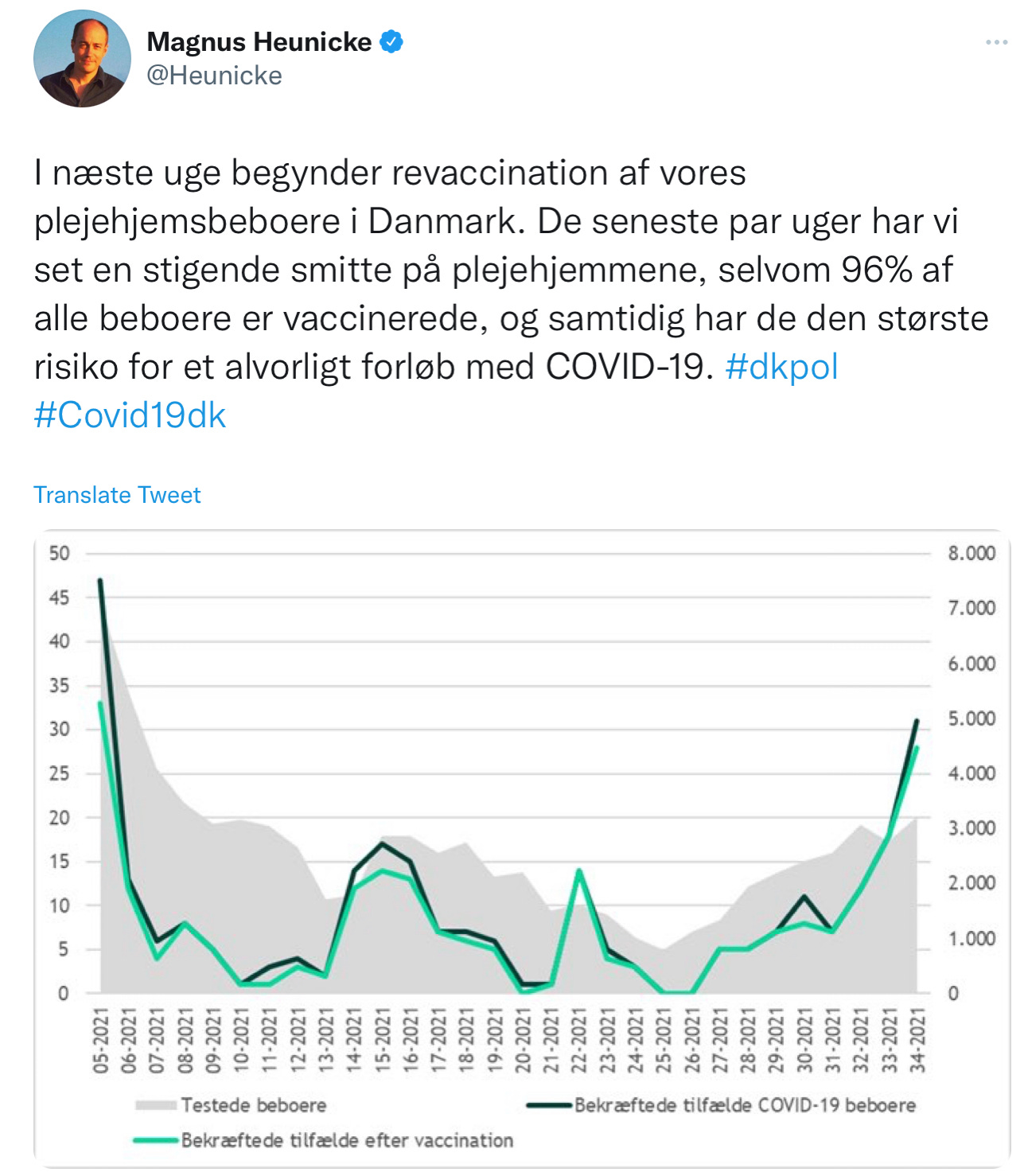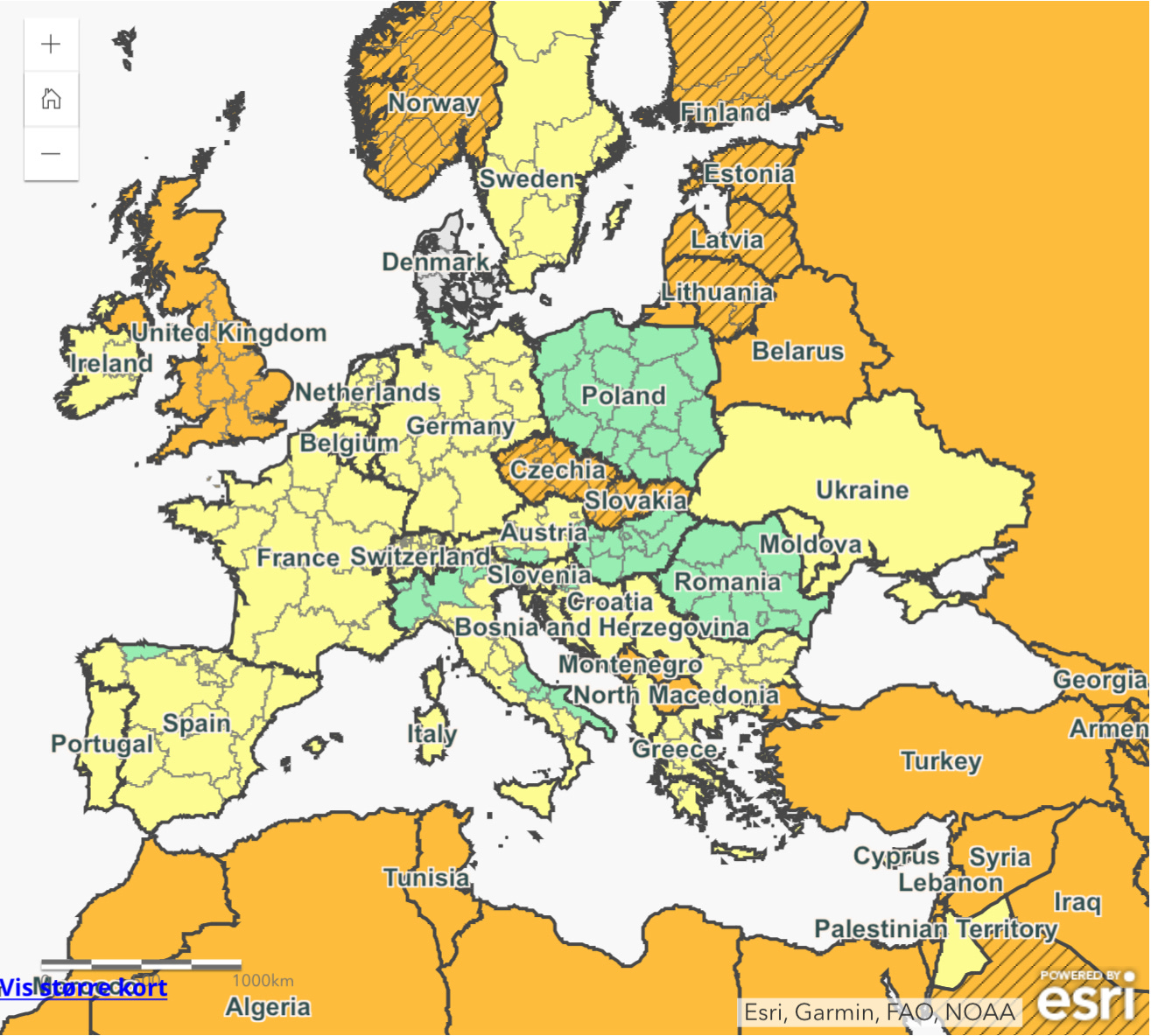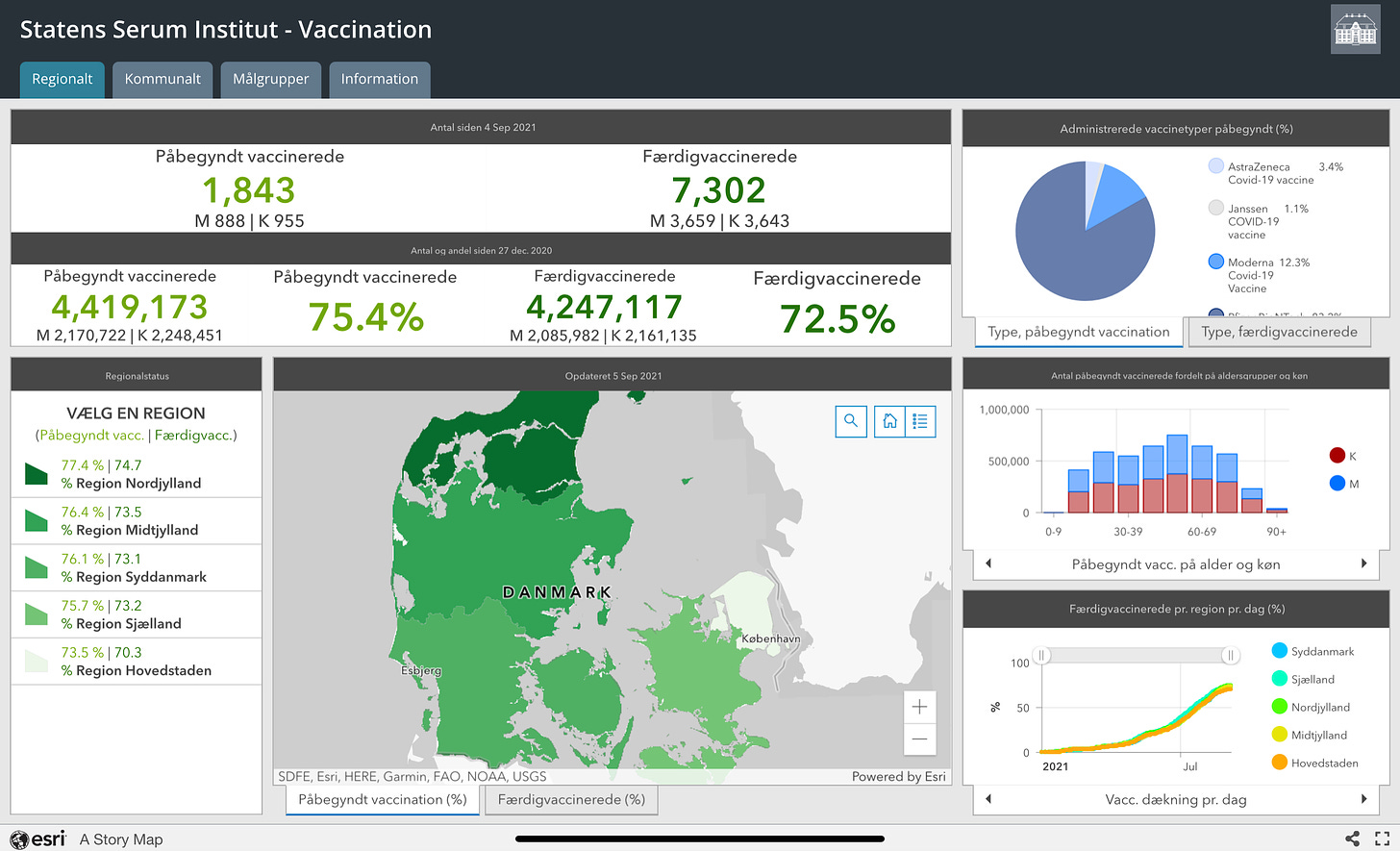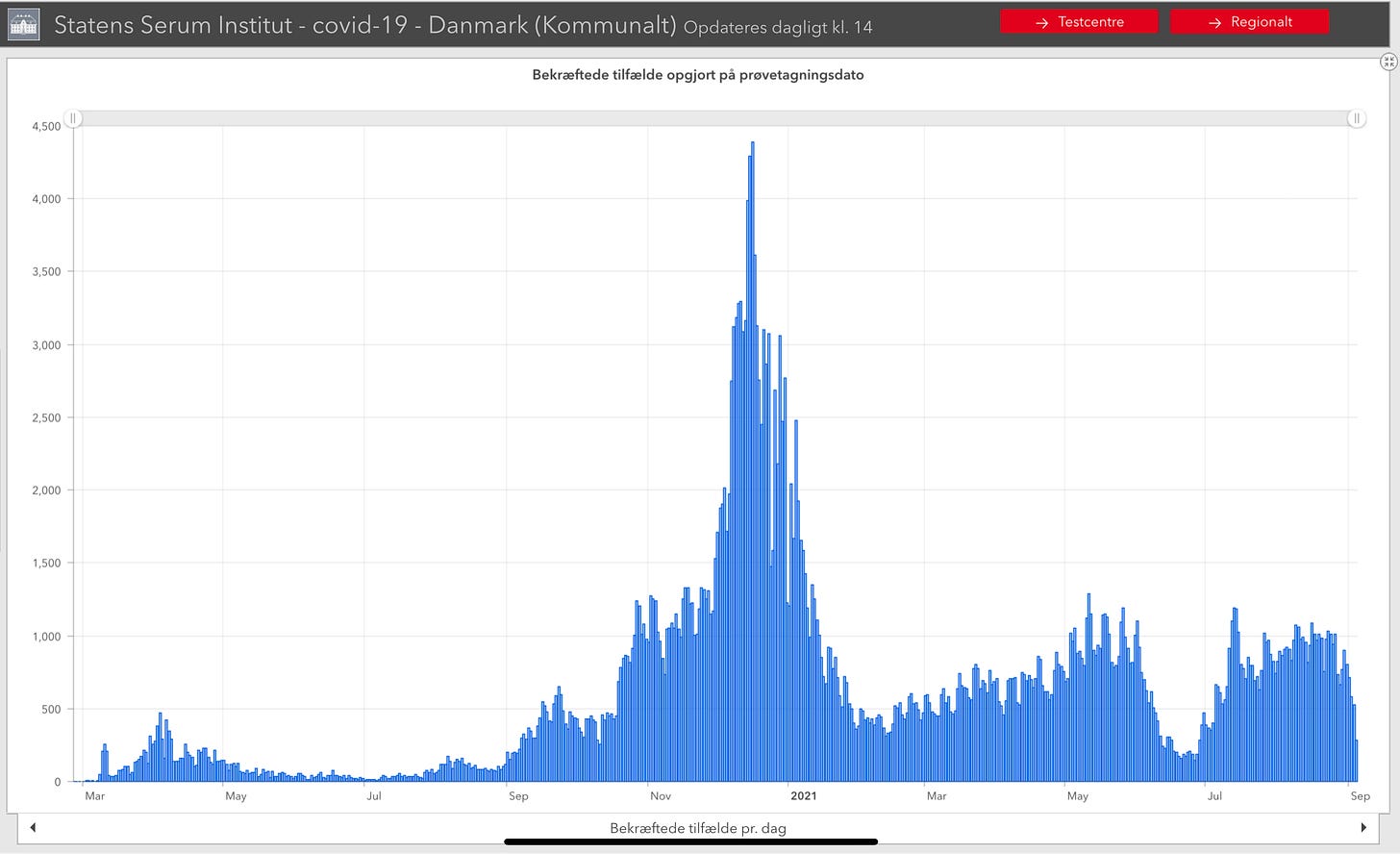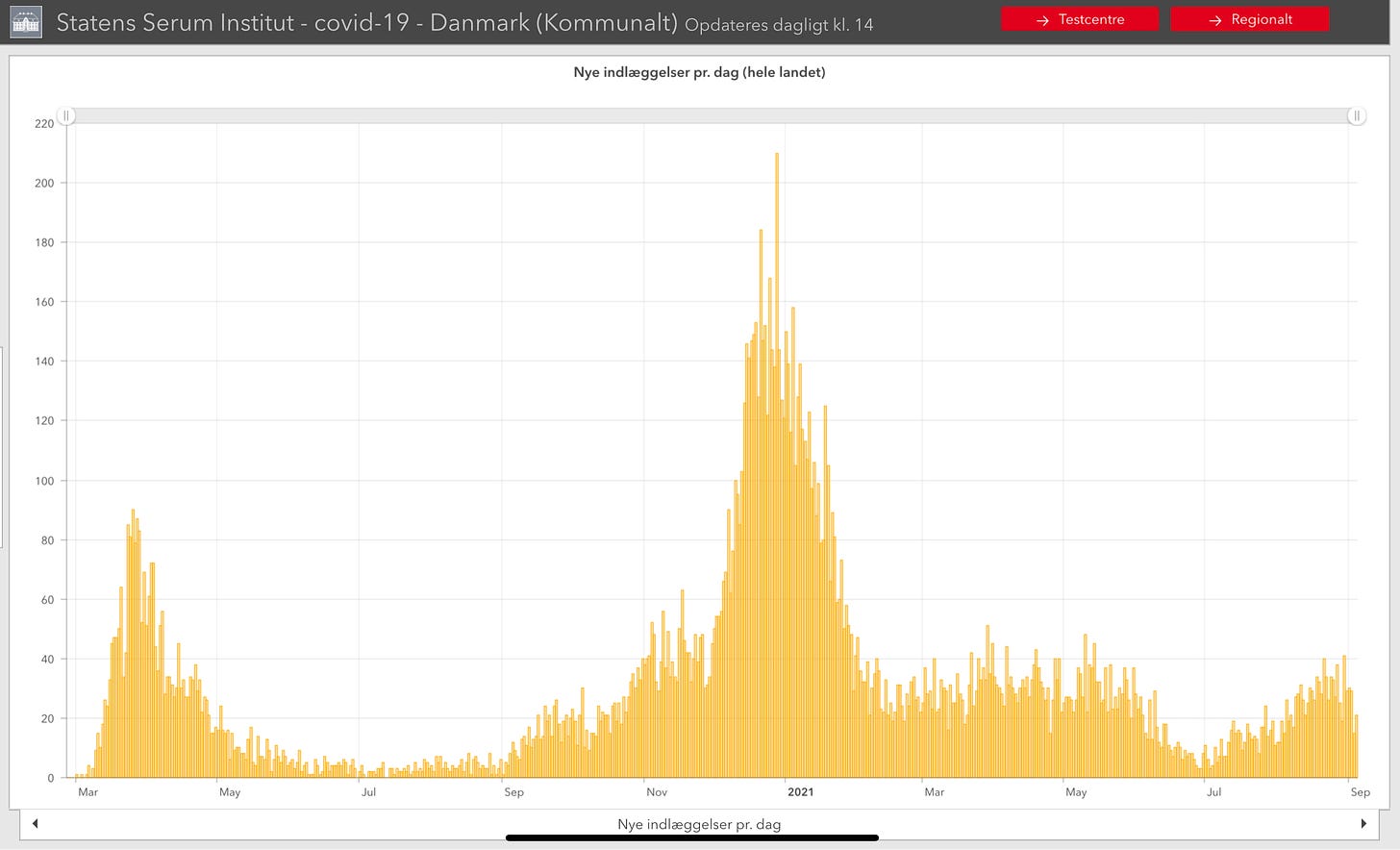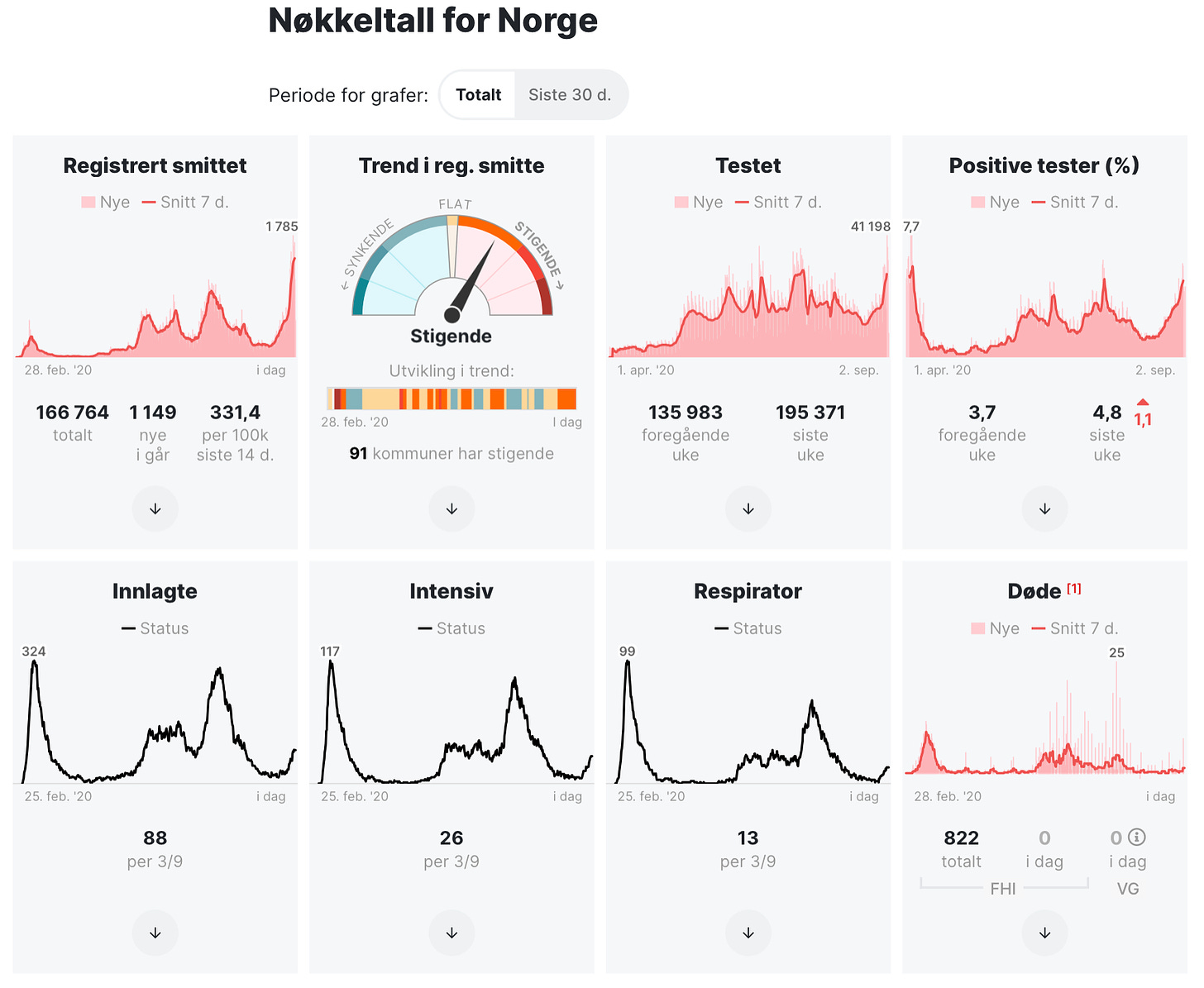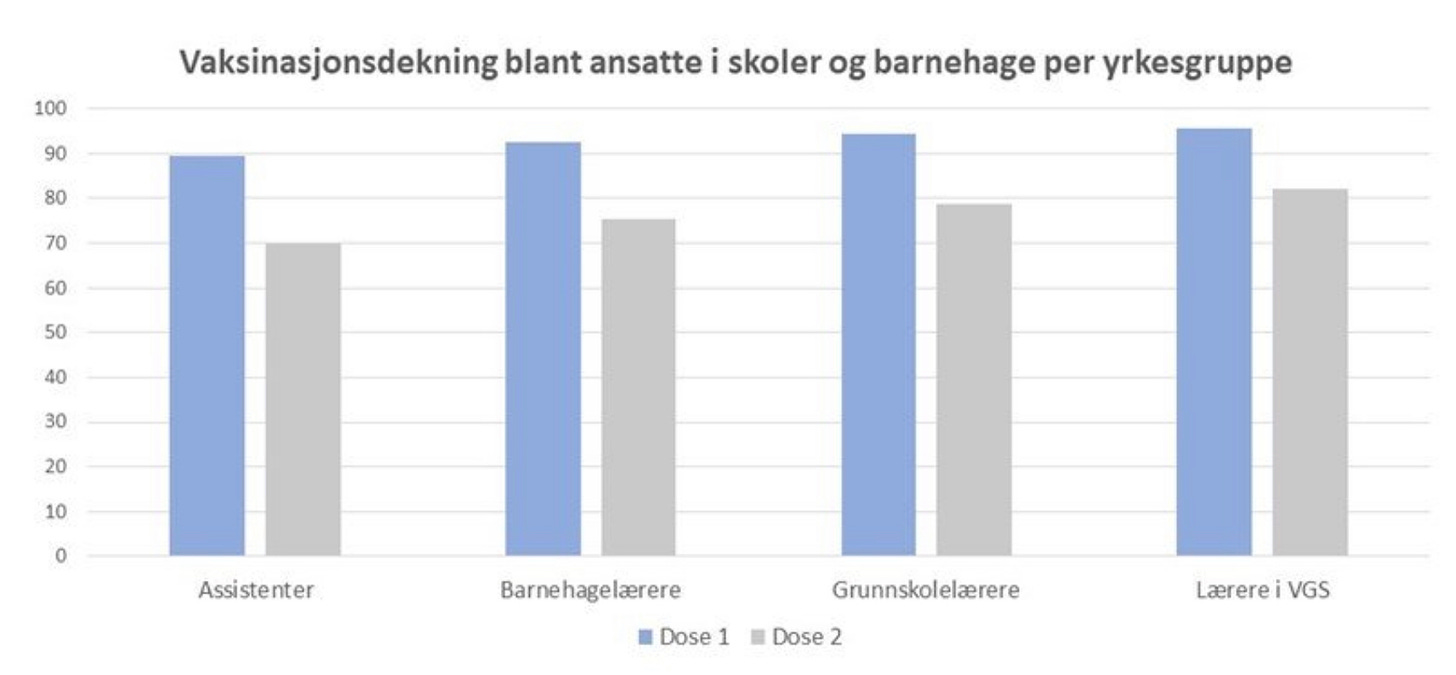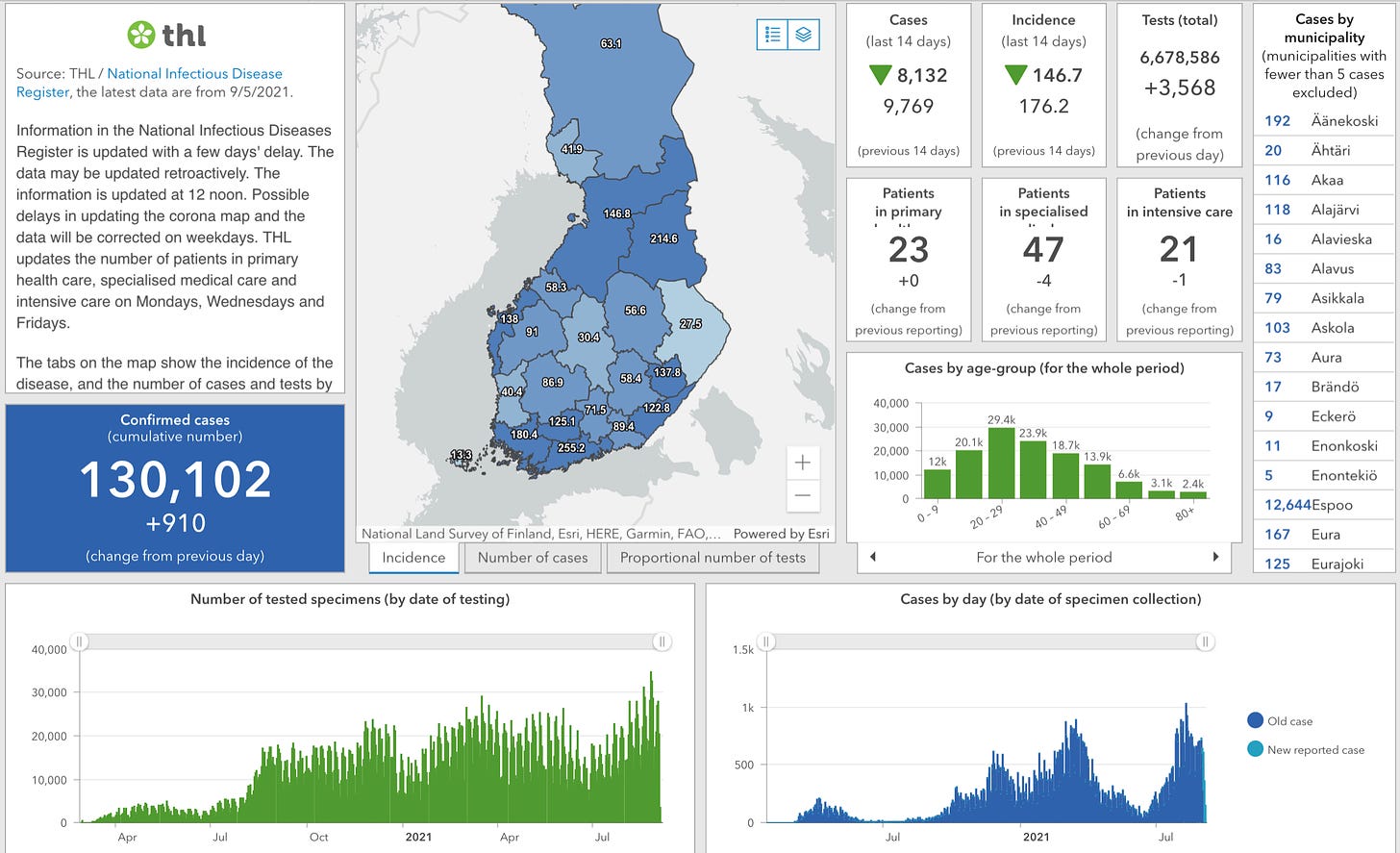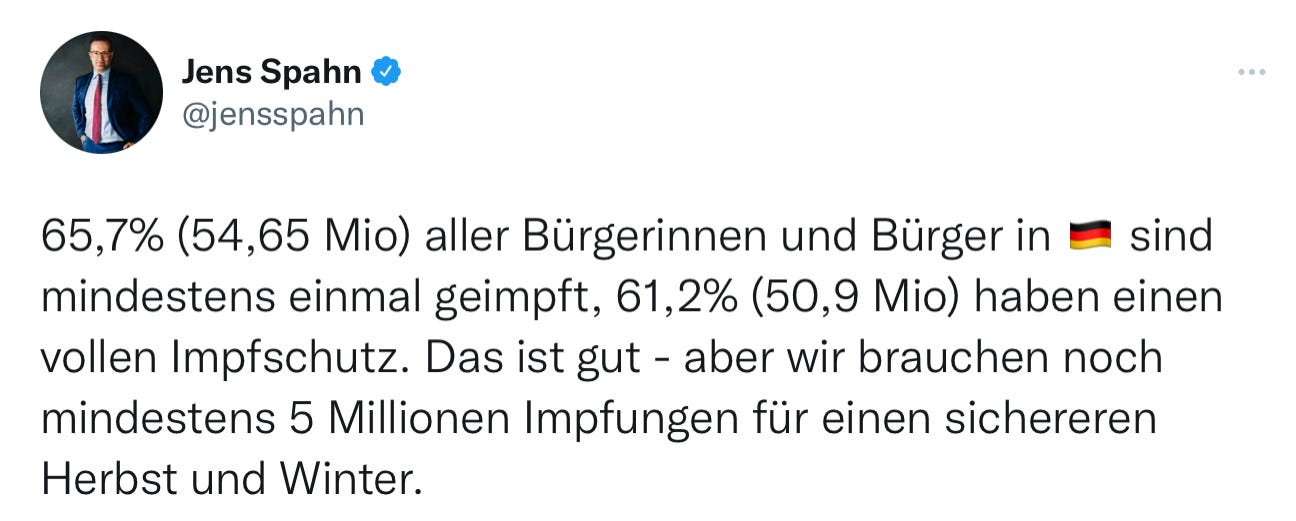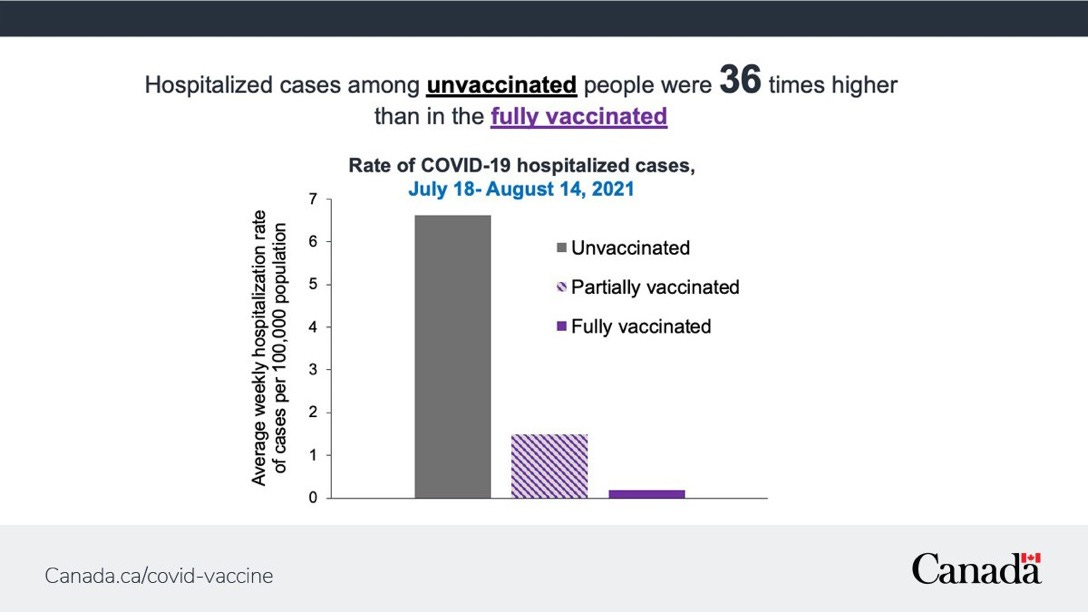Monday Morning News & Notes
The ferocious return of a virus usually only seen in the winter causes concerns
🇩🇰
Denmark’s Staten Serum Institut says it is seeing an “extraordinary” number of RS virus infections. In the last 14 weeks there have been 1,734 confirmed cases. 30% of those were recorded last week alone. The actual number may be even higher because the institut says testing for RS isn’t as robust right now. The infections have been among children, mostly between the ages of 1 to 3 years old.
The SSI says to see this magnitude of RS virus infections is extremely unusual, but it is made even more unusual because the virus usually shows up only in the winter months.
Ward Doctor Lasse Vestergaard:
“A possible explanation may be that it is an effect of the country having recently reopened after the closure and restrictions during the COVID epidemic. And that at the same time there are more people traveling again. It may also be that right now there is less protective immunity to RS virus among children, because there have been far fewer cases of the virus since the pandemic arrived. Here we saw a sharp drop in both RS virus and a number of other respiratory infections due to COVID restrictions and hygiene precautions.”
The virus often begins as a cold but then develops into a respiratory tract infection, which can lead to breathing problems.
-
When Denmark’s booster shot campaign was first announced, it was tightly targeted at a very select group of vulnerable people. But now it is broadening its scope and the Danish National Board of Health is hinting a third dose will be offered to even more people in the near future.
Health Minister Magnus Heunicke says seniors in nursing homes will also begin getting a third dose this week.
“In the last few weeks, we have seen an increasing infection in nursing homes, even though 96% of all residents are vaccinated.”
The National Health Board decided to expand its booster shot campaign after reports from the European Medicines Agency and the European Centre for Disease Prevention. The two agencies recommended booster shots for vulnerable and high-risk populations while also emphasizing there is no urgent need to give third doses to the general population.
Booster shots have already begun to be administered to people with weakened or compromised immune systems in Denmark.
The health board says virtually all the infections popping up in nursing homes are among fully vaccinated seniors. In week 34 alone, infections were detected in 15 different nursing homes.
Deputy Director Helene Bilsted Probst:
“Revaccination of the residents of nursing homes will begin in the coming week. We have the vaccines, and fortunately we already have experience with rolling out vaccinations in nursing homes. From October 1, nursing home residents will also be vaccinated against influenza.”
Probst says seniors home staff and healthcare workers who were among the first groups vaccinated will also be next in line for a third vaccine dose.
-
An investigation into any link between COVID vaccines and a potential inflammatory side effect has been broadened. The European Medicines Agency’s European Adverse Reaction Committee has expanded its investigation to include all EMA-approved vaccines.
In early August, the Danish Medicines Agency (LMST) reported a case of MIS-C, a condition in which the immune system reacts very violently and causes inflammation in the organs, after a 17-year-old was vaccinated with Pfizer/BioNTech. Since the report, other instances of post-vaccination MIS-C have been reported in other European countries in both children and adults. According to the EMA, there are seven cases of MIS-C reported so far across Europe, with five cases coming after Pfizer inoculations, one after a Moderna jab, and another after a Johnson & Johnson shot. This was enough to launch a much broader look to determine any link to any of the coronavirus vaccines.
It is important to note that this can also a side effect of getting COVID. According to the LMST Danish pediatricians estimate the frequency of MIS-C as a side effect of having the coronavirus itself to be about 1 per 4,000 children who are infected.
In Denmark, with over 300,000 vaccinations among the 12 to 19 year old age group, there has been just the single MIS-C case to date. The 17-year-old has recovered after treatment.
-
There were some important changes over the weekend in the Danish Ministry of Foreign Affairs COVID risk travel assessment map. First, Sweden is now entirely yellow. This change means border regions in southern Sweden have lost their near-normal green status. This means all travelers who are not fully vaccinated or who have not had a recent COVID infection now have to take a mandated coronavirus test on entry into Denmark.
The other big change is that the USA becomes orange. This is likely due to its infection situation and recent encouragement from the EU to reimpose travel restrictions on Americans. U.S. travelers now need a “recognizable purpose” to enter Denmark. Fully vaccinated Americans who meet the criteria can come into Denmark without testing or isolation; any travelers who are not vaccinated are required to show a negative COVID test at customs. They must also isolate on arrival and can only come out of quarantine with a negative test on day four.
As for the other changes:
Within the EU, Croatia also becomes yellow, with the exception of the Sjeverna Hrvatska region, which remains green.
In Austria, the region of Lower Austria has also turned yellow, as have the Bolzano regions of Italy, and joining them in Norway are the regions of Inland, Agder, and Trøndelag
Outside the European Union, the following countries also turn orange: Israel, Kosovo, Lebanon, Montenegro, and Northern Macedonia.
-
The Danish vaccination campaign continues to be sluggish as the percentage of the total population having one vaccine dose in the last seven days rose from 75.1% to 75.4%. Over the last week just 19,269 1st doses were done. The gap between first and second doses also continues to close, with 72.5% now fully vaccinated.
On Saturday, there were 9,145 total inoculations administered, and of those 1,843 were first doses.
-
Staff with Region Nordjylland will be busy this week operating pop-up vaccination sites throughout the week in four municipalities: Thisted, Mors, Aalborg, and Brønderslev. Many of those sites will be on school grounds, including multiple locations at Aalborg University on Wednesday.
Health Planning Chief Consultant Anders Koudal Cinicola says the pop-up sites are appointment-free and everyone who needs a vaccine dose is welcome.
“With the mobile vaccination teams, we prioritize vaccination opportunities at educational institutions, as the vaccination support is lower among the younger part of the population. But everyone is welcome to come, even if they are not affiliated with the school.”
The region is reporting that almost 90% of those 12 years old and older in Region Nordjylland have had at least one dose.
-
Region Sjælland says it is seeing “positive developments” in efforts to vaccinate 12 to 15 year olds, with 989 first doses administered in the age group from August 25 to September 1. Beginning this week, the health region will also begin operating pop-up vaccination sites at primary schools.
-
Denmark has added 1,767 COVID infections and six more coronavirus deaths since its Thursday update. It reported 697 infections on Friday, 438 on Saturday, and another 632 on Sunday.
Denmark has so far managed to fend off any massive coronavirus explosions as seen in other countries, despite the Delta variant being dominant. In fact, case loads seem to be easing.
-
COVID hospitalizations (124) have risen slightly (+3) while the number of infected people in an ICU (26) and of those on a ventilator (17) are unchanged day to day.
-
Region Syddanmark is reducing opening hours at six of its smaller PCR testing sites effective today. The sites are in Haderslev, Tønder, Grindsted, Fredericia, Middelfart and Nyborg. The need for an appointment to be tested has also been removed so drop-ins are welcome. The testing sites will be open from 8.00am - 6.00pm on weekdays and 10:00am to 4:00pm on weekends and public holidays.
🇸🇪
Region Stockholm says its COVID infection situation continues to tread water. However, the region says the hospital system is under growing pressure, with 98 people in care and 16 of them in an ICU.
Infection Control Doctor Maria Rotzén Östlund says something needs to change.
“We still have too many COVID cases. For a couple of weeks now, we have been on a plateau where it is neither increasing nor decreasing to any great degree. But that is not enough; the infection must go down. We can only do that if everyone who has the slightest symptoms stays at home and tests themselves as soon as possible, and of course that everyone gets vaccinated.”
The region says the majority of hospital patients are either unvaccinated or have just a single dose.
🇳🇴
Norway has added 4,283 infections and had no new corona deaths since its Thursday update.
COVID hospitalizations (88) slipped down (-1) while ICU numbers (26) edged upward (+1) and of those, the number on a ventilator (13) remains unchanged.
To date, 72.30% of Norwegians have had one vaccine dose and 60.18% have had both doses.
-
Teachers and school staff in Norway have higher vaccination rates than the general population. The Norwegian Institute for Public Health attributes this to prioritizing vaccinations for the education sector back in June.
The NIPH says overall 92% of teachers and school staff have had a first dose and 75% are fully vaccinated. This is about five percentage points higher than rates seen in the general population. For upper secondary schools specifically 96% of teachers and school staff have one dose and 4 out of 5 (82%) have both doses.
However, there is still a concern. Reflecting a trend seen in the general population, school employees between the ages of 25 and 39 years old have the lowest vaccination rates. This group also happens to be the largest number of employees in schools and kindergartens. Norway’s public health agency is looking to boost vaccine coverage in that group by utilizing drop-in vaccinations, where people can get the jab without needing an appointment.
🇫🇮
Finland has registered 1,558 infections over the last three days. It reported 561 infections Friday, 87 on Saturday, and 910 on Sunday. Judging by the disparity between Saturday and Sunday, it looks like there may have been a reporting issue.
To date, 4,051,007 1st doses (72.4% of the population) have been administered, while 2,955,642 people (53%) have had both vaccine doses.
-
Finnish Prime Minister Sanna Marin has indicated that her government is hoping for a return to normal, possibly in October. Marin has previously tied any wholesale lifting of coronavirus restrictions to vaccination rates in Finland exceeding 80% of the population over the age of 12.
After meeting in an unusual session on Sunday, the Finnish government looks to be scrapping a mandated two-meter social distancing requirement. It will also table a new COVID strategy later today. According to YLE, once legislation is amended to remove the social distancing mandate, it would be up to the regions and municipalities to define what is considered to be a close contact.
🇩🇪
Over the weekend, Germany’s Health Minister Jens Spahn took to Twitter to urge people to get vaccinated as vaccination rates slow to a crawl. Spahn warned that to ensure a “safe autumn and winter” another five-million people in Germany need to get vaccinated.
Infection numbers are steadily climbing in Germany, heading into the colder fall and winter months, where COVID infections are expected to rise. Spahn is growing concerned that vaccine-induced protection is nowhere near as high as it should be to try and mitigate another potentially crippling coronavirus wave.
He also spoke to the Hannoversche Zeitung newspaper:
“The vaccination rate is still too low to prevent an overburdening of the health system.”
Spahn says currently, of the COVID patients in the country’s intensive care units, 90% are people who are unvaccinated.
🇪🇺
The European Union and AstraZeneca reached a settlement on Saturday, which secures the EU delivery of all 200 million vaccine doses still outstanding, and in return it drops its litigation against the vaccine maker.
AstraZeneca will deliver 135 million vaccine doses to Europe by the end of the year and then the remaining 65 million doses before the end of March in 2022.
EU Commissioner for Health and Food Safety Stella Kyriakides hinted in responding to the settlement that the European Union will likely donate a lot of those AstraZeneca doses to the global COVAX initiative. The EU has promised to donate 200 million vaccine doses to the WHO-led effort to get desperately needed vaccines to developing countries.
🇬🇧💉🦠
A new study out of the United Kingdom has found that being vaccinated not only significantly lowers the risk of serious cases of COVID, and hospitalizations; it also reduces the chances of having long-COVID.
Per the researchers in the study:
"We found that the odds of having symptoms for 28 days or more after post-vaccination infection were approximately halved by having two vaccine doses. This result suggests that the risk of long-COVID is reduced in individuals who have received double vaccination.”
The study involved over a million adults who self-reported coronavirus symptoms using an app. The researchers then studied responses among the vaccinated over a seven-month period, comparing symptoms to those who were not vaccinated.
Overall, the study found that being fully vaccinated was associated with fewer reports of COVID symptoms, no matter the age group or whether someone had been infected.
You can find the study in full HERE
🇨🇦
As of midnight tonight, Canada will open its borders to all fully vaccinated tourists and non-essential travelers. According to the Canada Border Services Agency, here are the eight things travelers need to know.
Only fully vaccinated visitors will be allowed to enter Canada. This means anyone who has had two doses, or a mix of, Pfizer/BioNTech, Moderna, AstraZeneca, or Johnson & Johnson. The second dose must have been taken no less than 14 days before arriving at the Canadian border.
Travelers must have a “valid pre-arrival COVID molecular test” taken no more than 72 hours from a scheduled flight or their arrival at a land crossing. Rapid tests WILL NOT be accepted.
For those who have had COVID, a previous positive test result taken between 14 and 180 days before departure will also suffice.
Travelers must be asymptomatic that is not having any COVID symptoms.
Submit all mandatory information via ArriveCAN either on the app or on the website. This includes proof of vaccination and a quarantine plan. Anyone who cannot show their ArriveCAN receipt, either printed, via email, or on a smartphone, will not be allowed to board their flight.
Foreign nationals must be admissible under the Immigration and Refugee Protection Act
Be prepared to take a test on arrival if you are randomly selected.
Travelers must also have copies, either paper or electronic, of their PCR test results, proof of vaccination, and the originals of any certified translations available for verification at the border and for 14 days following their entry to Canada.
The CBSA says random COVID testing of fully vaccinated travelers between August 9 to 26 had a positivity rate of 0.19%, or 112 positive results out of the 58,878 tests administered.
-
The Public Health Agency of Canada tabled some pretty bleak COVID modeling going into the weekend. The agency is warning that daily coronavirus cases could reach unprecedented highs if nothing is done to bring the numbers down. The modeling data suggests that if the level of infection transmission could be reduced across the country by 25% then the 4th wave could be reigned in, peaking at levels lower than previous infection waves.
Canada’s Chief Public Health Officer Dr. Theresa Tam says there is an urgent need for young people between 18 and 39 years old to get vaccinated. Tam says young people continue to see the highest infection rates. She wants people to limit their social contacts again.
Tam says getting vaccinated is crucial. She points to statistics gathered from the provinces and territories showing people who are unvaccinated are 12 times more likely to get infected and are being hospitalized at 36 times the rate of those who have both doses.
-
The Government of Canada COVID dashboard is no longer being updated on weekends. Today is the holiday Monday during the Labour Day weekend and it likely means we will have to wait until Tuesday to see an updated pandemic picture.
-
In Ontario, the province has added 2,562 infections since its Thursday update. There were 807 infections reported Friday, 944 on Saturday, and another 811 on Sunday. Saturday’s 944 infections are the highest seen in the province since May 30.
Of the 2,562 infections over the last three days, 78.3% were among people who were unvaccinated or who had just a single dose.
As of Sunday’s update, there were 266 people who were hospitalized and another 179 who were in an ICU.
-
After logging 1,339 infections and nine more virus deaths on Friday Alberta has again reintroduced restrictions to try and bend down a rapidly rising infection curve. As of Saturday masks are mandatory again in all indoor public spaces and in workplaces. Restaurants cannot sell booze past 10pm. People are also being asked to reduce social contacts and limit social gatherings.
In an additional measure to try and spur more vaccinations, Premier Jason Kenney announced hold-outs will get $100 to begin the vaccination process. The move has resulted in a firestorm of criticism.




